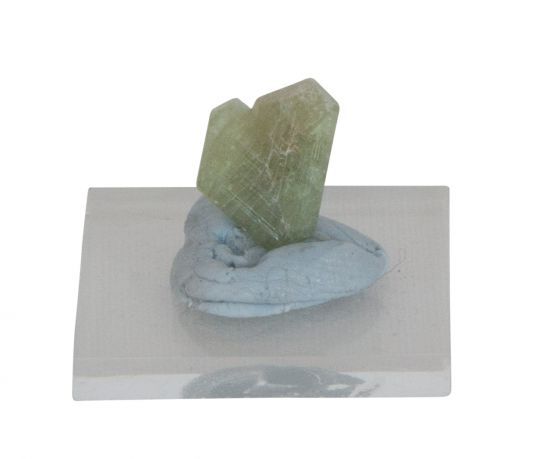We use cookies to make your experience better.
Chrysoberyl "Cat Eye", Rio des Pratinhas, Arataca, Bahia, Brazil
The mineral or gemstone chrysoberyl is an aluminate of beryllium with the formula BeAl2O4.[3] The name chrysoberyl is derived from the Greek words χρυσός chrysos and βήρυλλος beryllos, meaning "a gold-white spar". Despite the similarity of their names, chrysoberyl and beryl are two completely different gemstones, although they both contain beryllium. Chrysoberyl is the third-hardest frequently encountered natural gemstone and lies at 8.5 on the hardness scale, between corundum (9) and topaz (8). An interesting feature of its crystals are the cyclic twins called trillings. These twinned crystals have a hexagonal appearance, but are the result of a triplet of twins with each "twin" oriented at 120° to its neighbors and taking up 120° of the cyclic trilling. If only two of the three possible twin orientations are present, a "V"-shaped twin results.Ordinary chrysoberyl is yellowish-green and transparent to translucent. When the mineral exhibits good pale green to yellow color and is transparent, then it is used as a gemstone. The three main varieties of chrysoberyl are: ordinary yellow-to-green chrysoberyl, cat's eye or cymophane, and alexandrite. Yellow-green chrysoberyl was referred to as "chrysolite" during the Victorian and Edwardian eras, which caused confusion since that name has also been used for the mineral olivine ("peridot" as a gemstone); that name is no longer used in the gemological nomenclature. Alexandrite, a strongly pleochroic (trichroic) gem, will exhibit emerald green, red and orange-yellow colors depending on viewing direction in partially polarised light. However, its most distinctive property is that it also changes color in artificial (tungsten/halogen) light compared to daylight. The color change from red to green is due to strong absorption of light in a narrow yellow portion of the spectrum, while allowing large bands of more blue-green and red wavelengths to be transmitted. Which of these prevails to give the perceived hue depends on the spectral balance of the illumination. Fine-quality alexandrite has a green to bluish-green color in daylight (relatively blue illumination of high color temperature), changing to a red to purplish-red color in incandescent light (relatively yellow illumination).[5] However, fine-color material is extremely rare. Less-desirable stones may have daylight colors of yellowish-green and incandescent colors of brownish red. Cymophane is popularly known as "cat's eye". This variety exhibits pleasing chatoyancy or opalescence that reminds one of the eye of a cat. When cut to produce a cabochon, the mineral forms a light-green specimen with a silky band of light extending across the surface of the stone
| Dimensions | 15-25mm |
|---|












